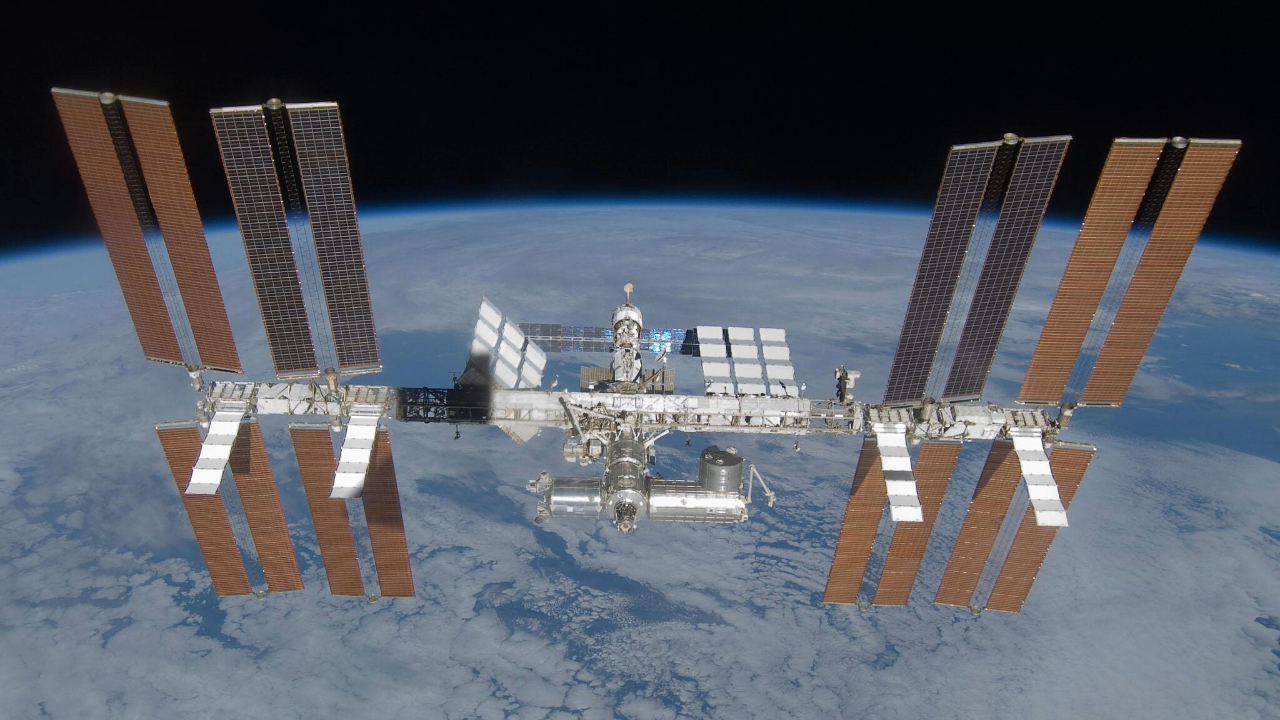New Stellar Speedometers Probe Universe's Mysteries
The twinkling starlight ofthe night sky is not just pretty to look at ? it also carries with it thesecrets of distant suns.
From this light, scientistscan glean information about what stars are madeof, as well as the speed and direction of their movements across theheavens. This data, in turn, can help unravel riddles about cosmic expansionand reveal if other Earth-like worlds exist.
Now, German researchershave more accurately scanned starlight for these telltale details, according toa Sept. 5 study in the journal Science. The paper?s authors tested animproved stellar speedometer, called a laser frequency comb, on a telescope forthe first time earlier this year. Scientists say the Nobel Prize-winningtechnology, which debuted in 2005, still needs some work. But it may prove abig step forward in astronomical research.
"I?m very excitedabout the discoveries this laser frequency comb should make possible,"says Thomas Udem, an author of the paper and an optical physicist at the MaxPlanck Institute for Quantum Optics in Garching, Germany.
Red and blue shifts
For its first trial run,researchers hooked the speedometer up to a telescope in Germany in March and took basic readings of the Sun?s light. The comb device looks like a largeoven-pan-size motherboard of circuitry with cables running to other instrumentsand monitors. Nevertheless, this contraption helps astronomers tease outimportant information from the complexity of a star?s light.
As stars travel through theuniverse, certain signatures in their light move, too. Scientists are afterthese so-called spectral lines that result from elements like helium and oxygenheating up in stars. When starlight is splayed out by a prism, the lines looklike thin, dark gaps in the rainbow of colors that the human eye can see,called the visible spectrum. Each element, from hydrogen on up, possesses itsown unique barcode of spectral lines.
Breaking space news, the latest updates on rocket launches, skywatching events and more!
When a star moves away fromEarth, these spectral lines shift toward the red,low-energy part of the spectrum. This happens as light waves and their setsof spectral lines stretch out while spanning the trillions upon trillions ofmiles between their stellar sources and our telescopes. This wave-stretchingphenomenon, called the Doppler Effect, works for both sound and light: Think ofhow an ambulance?s siren fades as the vehicle zooms off, says Udem. For sound waves,this expansion means lower pitch, while for light it means longer, redderwavelengths.
Accordingly, spectral linesshift into the bluer, higher-energy end of the spectrum when a star is gettingcloser, just as an approaching ambulance siren gets louder. By spotting theseblue or red shifts, scientists can tell if stars are heading hither or thither.To detect these usually small shifts, scientists need a standard for comparingthe shifted light to normal, unshifted light, says Udem.
How the 'comb' works
Laser frequency combsanswer this need for greater precision by using laser pulses to generate manydistinct energies of light. This light is filtered through a prism, which thenmakes evenly spaced "spikes" on a spectrum. These spikes correspondto "teeth" in the comb, says Udem.
By way of another analogy,this "color ruler" has clear separations between units so scientistscan more easily read the pattern of spectral lines in a star?s light, saysMichael Murphy, a co-author of the paper and an astrophysicist at SwinburneUniversity of Technology in Hawthorne, Australia. The light collected by thetelescope is routed through the comb, which overlays its own color ruler on topof the incoming spectrum from the stellar object of interest.
Current telescopecalibration techniques use special lamps containing elements like thorium andargon to set spectral lines for comparison. "But these lamps change overtime and can throw off your results," says Scott Diddams, a physicist atthe National Institute of Standards and Technology in Boulder, Colo., who isalso working on laser frequency combs.
Measures of stars'velocities vary by 10 meters per second with present instrumentation ? toomuch to suss out some finer details, like Earth-sized planets. But with combcalibration, the German team achieved state of the art variation at 9 metersper second, says Udem, even though some equipment of theirs, like the atomicclock that ensures accuracy, was modest in capacity. Theoretically, 1,000-foldmore precision should be possible, he adds, down to one centimeter per second.
Tracking quasars
Once armed with precisionof that caliber, scientists plan to investigate the universe?s expansion to seeif it is really accelerating. Current evidence, like the extreme red shifts ofdistant supernovae, indicates this is so, but finding a mechanism for thisgalloping growth has baffled cosmologists. They have proposed the existence ofa mysterious, as-yet-undetected force called dark energy as a tentativeexplanation.
Probing this accelerationwill be an ambitious, 20-year project, says Udem. The proposed experiment wouldtrack far-flung young galaxiescalled quasars on a massive telescope, appropriately called the EuropeanExtremely Large Telescope, which is not slated to begin operating until nearly 2020.The extent of the quasars' red shift over the planned two-decade period ofobservation should indicate if they are receding at a quickening rate.
Laser frequency combsshould also enhance the detection of small, Earth-like exoplanets that orbitother stars, says Udem. Planets cause gravitational disturbances in their suns'velocities by tugging them back and forth, making the stars appear to wobblevery slightly. With today?s astronomical equipment, though, scientists have ahard time finding Earth-size exoplanets because they generate such smallwobbling effects.
"These experiments arereally screaming out for help from frequency combs," says Swinburne?sMurphy.
Comb to hunt exoplanets
For now, the technology isstill too cutting edge to produce immediate, significant results, says Udem.The combs will need more teeth, for example: The device that his team used in Germany only provided calibration in the infrared part of the spectrum. (Elements producespectral lines in the infrared, too, not just in visible light.)
Even so, a U.S. team will try out a laser frequency comb this fall when hunting for exoplanetsaround some low-mass stars ? the first test for such a device on a star otherthan the sun. "It?s one step at a time with these instruments," saysRonald Walsworth, a physicist at the Harvard-Smithsonian Center forAstrophysics in Cambridge, Mass., who is involved with the effort.
The final designspecifications, based on which telescopes use them, will determine the combs' overallcosts, Udem adds.
Researchers hope that thiscalibration tool will push the limits of cosmological discovery. Yet anothertest made possible through enhanced instrumentation is exploring if the laws ofnature ?as we understand them ? hold true in distant, ancient quarters of thecosmos, says Udem. The speed of light and power of gravity, for example, "couldjust be sort-of 'by-laws' for our local time and place in the universe,"says Murphy. If these physical constants turn out to be variable, then thisfinding may break new ground on the fundamental theories of how the universeworks ?that people have been chasing since Einstein," says Murphy.
And that?s just what?s onthe docket so far. "It?s possible that new experiments that we have noteven thought of before will pop up," says Murphy, "and lead torevolutionary results."
- Top 10Star Mysteries
- Gallery:Alien Worlds Through Artists' Eyes
- TenYears of Planet Hunting
This story is provided by Scienceline, a project of New York University's Science, Health and Environmental Reporting Program.
Join our Space Forums to keep talking space on the latest missions, night sky and more! And if you have a news tip, correction or comment, let us know at: community@space.com.

Adam Hadhazy is a contributing writer for Live Science and Space.com. He often writes about physics, psychology, animal behavior and story topics in general that explore the blurring line between today's science fiction and tomorrow's science fact. Adam has a Master of Arts degree from the Arthur L. Carter Journalism Institute at New York University and a Bachelor of Arts degree from Boston College. When not squeezing in reruns of Star Trek, Adam likes hurling a Frisbee or dining on spicy food. You can check out more of his work at www.adamhadhazy.com.
